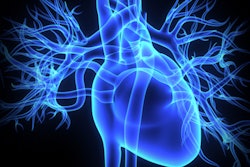Intracardiac echocardiography (ICE) can be used to guide catheter ablation of atrial fibrillation (AF), obviating the need for fluoroscopy and the resulting exposure to radiation for patients and the electrophysiologists performing these procedures, according to a study in the latest issue of Heart Rhythm.
Researchers from NewYork-Presbyterian Hospital in New York City reported that they use ICE -- along with computerized 3D mapping systems and preprocedural cardiac imaging -- to guide catheter ablation for routine AF ablation procedures (Heart Rhythm, June 2017, Vol. 14:6, pp. 928-934). The vast majority of their AF patients now do not require fluoroscopy, which is estimated to provide the radiation dose equivalent of 830 x-rays during a routine AF ablation procedure, according to lead author Dr. Bruce Lerman.
Co-author Dr. Jim Cheung noted that the concept of fluoroless catheter ablation has yet to gain wide adoption since its introduction several years ago. This is mostly because many electrophysiologists were trained to rely on x-ray imaging and are reluctant to trust ICE, he said.
"This concern can be remedied with experience," he said in a statement from NewYork-Presbyterian and Weill Cornell Medicine. "For some, the learning curve can be steep, but generally, the skillset can be readily acquired. By thoughtfully modifying the way the procedure is performed, we can significantly reduce the radiation risk in the process."
The institution is now training its fellows to utilize this technique, Cheung said.
Lerman said the most critical requisite for performing fluoroless catheter ablation of AF is a willingness to relinquish an old habit.
"Doing so will have a tremendous advantage for both patients and healthcare professionals," he said.
Lerman and Cheung are consultants for electrophysiology device manufacturer Biosense Webster.



















